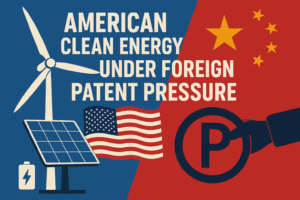In a significant ruling, the Calcutta High Court overturned a refusal order by the Indian Patent Office (IPO), providing crucial clarity on the scope of Section 3(b) of the Indian Patents Act, 1970. The court held that the IPO had misapplied the section while rejecting ITC Limited’s patent application for a heater-based aerosol generation device.
The court emphasized that patentability cannot be denied merely on presumptions regarding possible harmful use, such as tobacco consumption.
🔍 Background of the Case
ITC filed a patent application for a non-electronic heater assembly that generates aerosols from substrates. While tobacco was mentioned as one potential substrate, the invention also allowed for non-tobacco applications.
Despite this, the IPO refused the application citing Section 3(b), claiming that the invention could be “injurious to public health.” The office referred to reports by the World Health Organization (WHO) and Indian Council of Medical Research (ICMR) without notifying ITC, denying the company an opportunity to respond.
Full judgment available at IAM Media.
⚖️ Court’s Observations
Justice Sabyasachi Bhattacharyya, delivering the verdict, highlighted the following:
1. Misapplication of Section 3(b)
The court ruled that Section 3(b) — which bars patents on inventions “contrary to public order or morality” or “injurious to human, animal or plant life” — must be narrowly interpreted.
The judge stated:
“The mere presence of tobacco in the claims does not mean the invention is inherently injurious. There is no proof that the primary purpose is to aid tobacco consumption.”
This sets a precedent that patentability should be judged based on the primary function and not on speculative or optional uses.
2. Violation of Natural Justice
The IPO introduced external evidence (WHO/ICMR reports) at the final stage without giving ITC a chance to rebut. The court called this a procedural violation, stating that:
“Natural justice requires the applicant to be heard before new grounds are introduced.”
This procedural lapse led the court to send the case back for re-examination.
📌 Implications for Patent Law
This ruling could reshape how Section 3(b) is interpreted in India. Key takeaways include:
- Restricting subjective interpretation of “morality” and “health” under Section 3(b).
- Reinforcing natural justice in patent proceedings.
- Emphasizing evidence-based examination over assumptions or regulatory bias.
This decision aligns Indian patent law with international standards, including TRIPS and European Patent Convention (EPC) frameworks.
For more insights on Indian patent rulings, visit our Intellectual Property section.
🔗 Related Readings
- Section 3(b) of Indian Patents Act Explained
- ITC’s Ongoing IP Litigation
- Understanding Patent Refusals in India
🧠 Expert Opinion
Legal experts hail this judgment as a landmark in balancing public health concerns with innovation rights.
“The court has rightly differentiated between public health policy and patent eligibility. It’s a much-needed check on arbitrary refusal trends,” said Raghav Mehra, IP attorney at LexOrbis.
📣 Conclusion
The Calcutta High Court’s judgment is expected to have a lasting impact on patent examination practices in India. It clearly draws the line between actual harm and hypothetical misuse, emphasizing due process and fair hearing for innovators.
As India pushes for more innovation and R&D, this ruling comes as a strong signal to protect inventors’ rights within the legal and constitutional framework.




